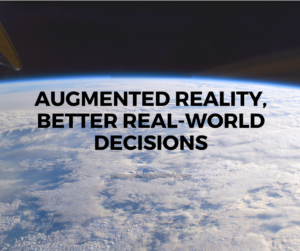Michael Thompson’s article for UploadVR this week provides a “cautionary tale of early innovation that failed to keep up with industry momentum.” Thompson reviews the current state of the AR smartglasses market, thriving in industry, and suggests that early innovators may not make it in the long haul. Are they dinosaurs and will they go the same way as other early innovators?
At AR in Action in New York City last week, it was observed that today’s AR is already very good. When discussing AR, most commentators opt to lower expectations by emphasizing the “early” nature of this technology. However, Thompson points out that there are a wide variety of compelling AR applications available today, and this “early” tech is already in school, hospitals, factory floors, real estate agencies, marketing campaigns and many other industries across the world.
The author asks, “Why is AR still a mere footnote to industry, an unknown concept in the collective minds of American businesses and consumers?”
ODG markets the devices for light enterprise use cases. They’ve announced a series of partnerships addressing logistics, maintenance, and health and safety functions for numerous industries including energy, heavy machinery, complex manufacturing, and medical devices. Thompson draws parallels between the current AR smartglasses market, noting: “all this early success is commendable and would be cause for unbridled optimism, except that Palm and RIM were in the same position for many years until the introduction of the iPhone.”
He goes on to describe how he believes the enterprise-focused hardware strategy may be wrong for AR glasses because this industry will not be segmented by user types. The vast majority of use cases do not require specialized hardware. One form factor and one set of standards can serve the needs of professionals and casual users alike.
Following Apple’s ARKit announced last week, “speculation is rife that AR will be a core feature of the tenth anniversary iPhone coming this fall. Some observers maintain that a snazzy pair of glasses will debut simultaneously.”
From holograms to positional tracking to environment mapping and computer vision, so many of the right factors are in place for a tipping point. “A tremendous prize is ripe for the picking, but no one has maneuvered aggressively to claim it.”









